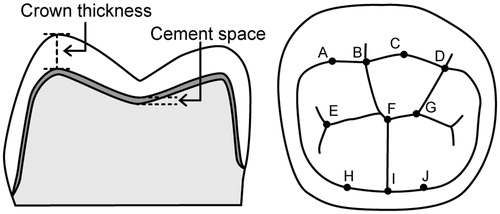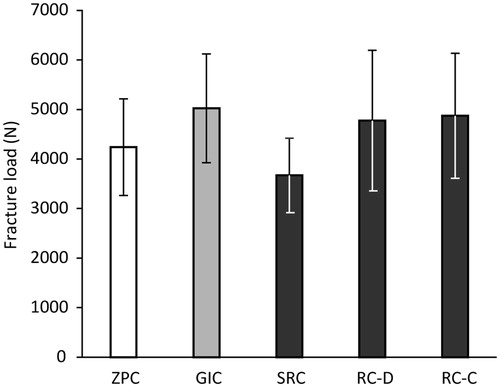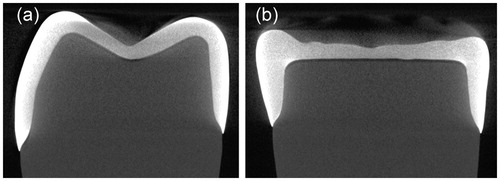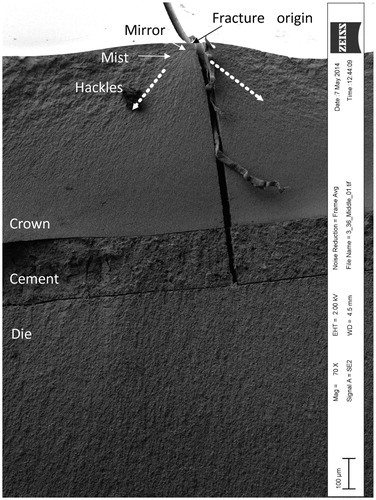Figures & data
Figure 1. Schematic representation of measuring points in micro-CT analysis. Crown thickness and cement space were measured as the vertical distance at 10 different points (A–J). The minimal occlusal thickness was obtained at B, F and I.

Figure 2. Compressive strength of cements tested. Different letters above the columns show significant differences (p < 0.01). ZPC, zinc phosphate cement; GIC, glass-ionomer cement; SRC, self-adhesive resin-based cement; RC-D, resin-based cement (dual cure mode); RC-C, resin-based cement (chemical cure mode).

Table 1. The mean values (SD) of crown thickness and cement space.
Figure 4. Fracture resistance of monolithic zirconia crowns cemented to dies using different cements. One-way ANOVA revealed that there was no significant difference between the groups. ZPC, zinc phosphate cement; GIC, glass-ionomer cement; SRC, self-adhesive resin-based cement; RC-D, resin-based cement (dual cure mode); RC-C, resin-based cement (chemical cure mode).



